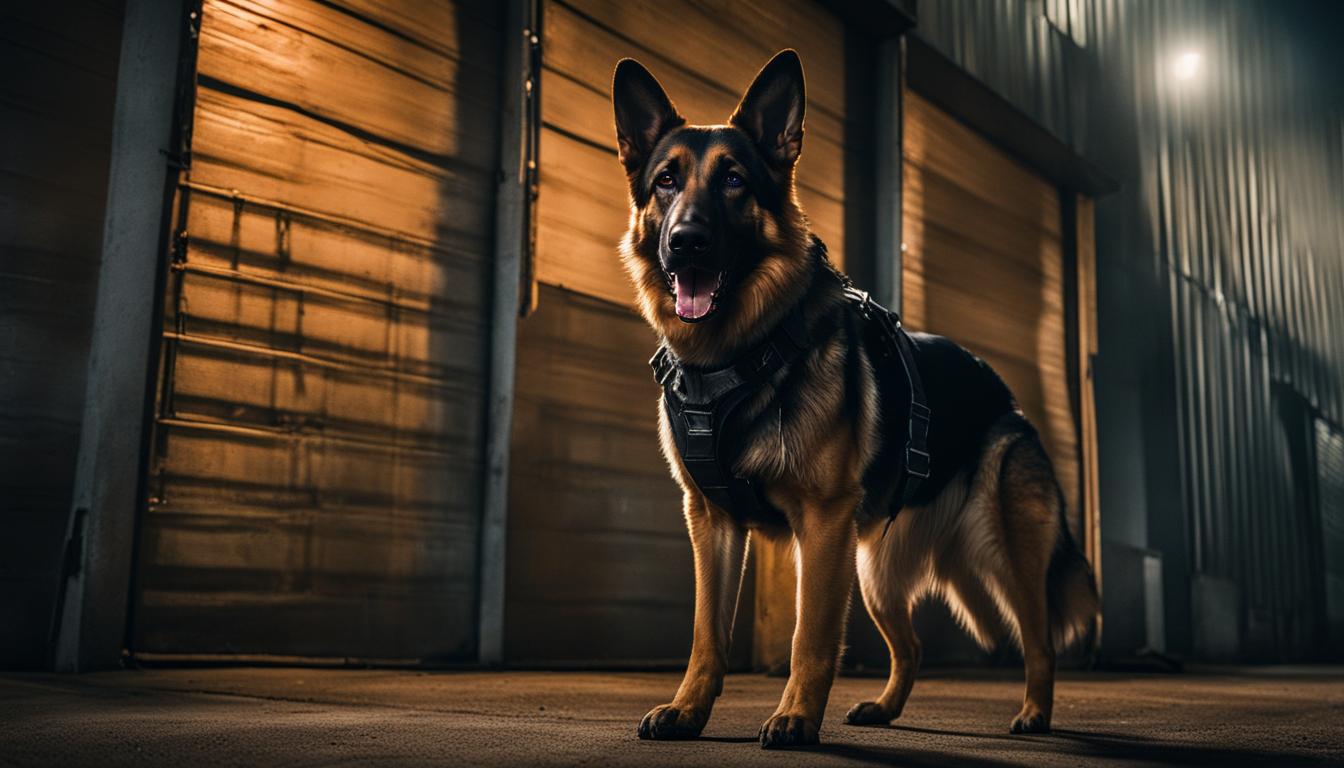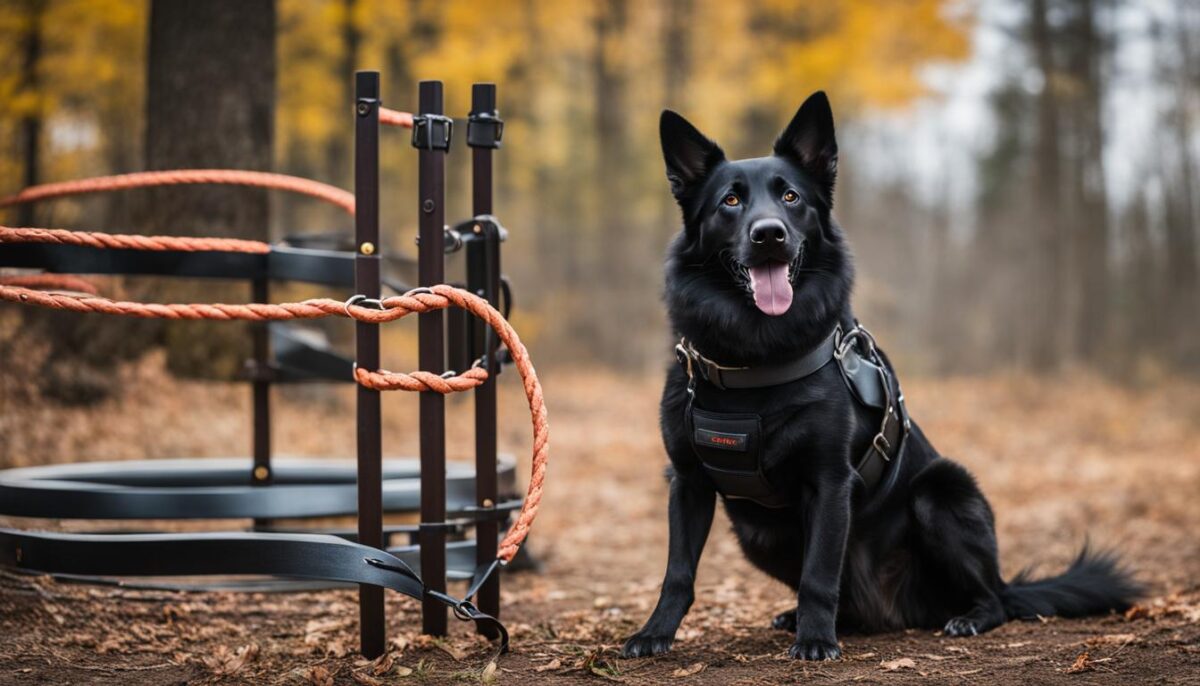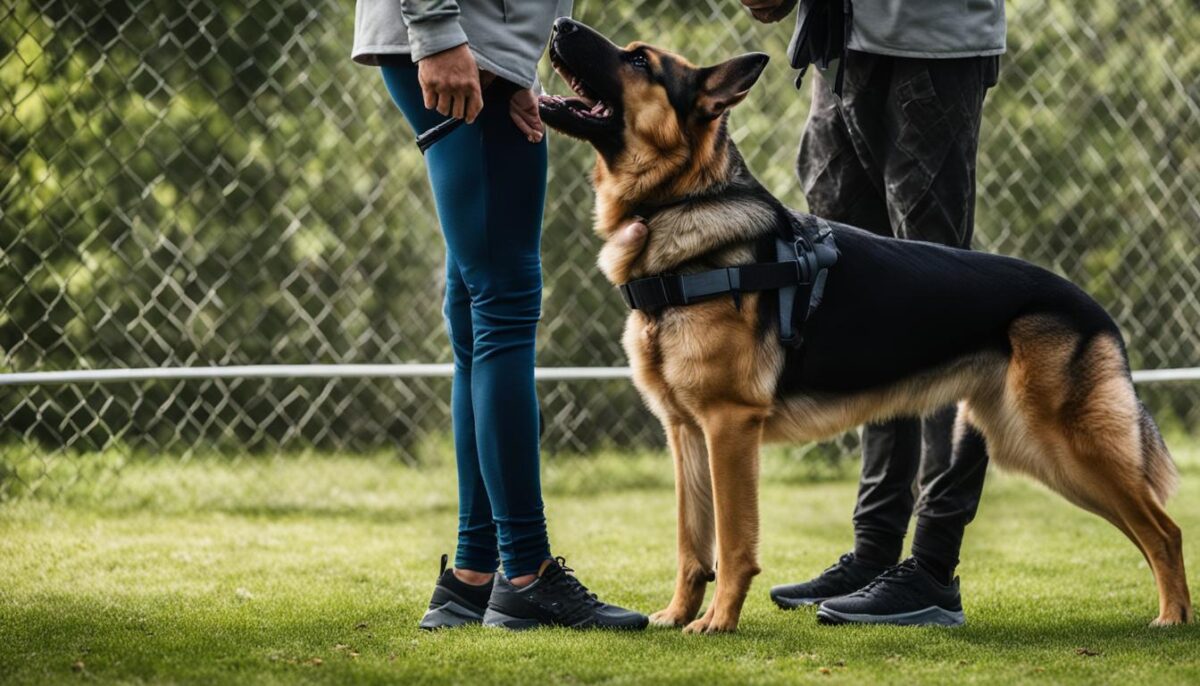When you think about keeping your home safe, you might think about having a guard dog. Training your dog to attack can make you feel safe. But, it is a big job to do. You need to teach your dog to listen and obey first. This is called obedience. You want your dog to know when it’s time to be calm and when it’s time to protect.
Protective training means you and your dog must understand each other very well. You will use safety commands so your dog knows what to do. The dog needs to learn when to bark, when to be nice, and when to show its teeth if there is danger. If you do it right, your dog will be very good at keeping you safe.
Remember, you must be careful when you train your dog to attack. Your dog is learning to be strong and brave, but also to listen to you. That way, your dog will be a good guard dog and a good friend. This training should only be done if you are very sure and ready for the job.
Key Takeaways
- Teach your dog to listen well first.
- Training your dog to attack is for safety.
- Use special words to help your dog know when to protect.
- Be sure you are ready to train your dog this way.
- A well-trained dog makes a good guard dog and friend.
Understanding the Basics of Attack Training
When you set out to teach your dog to protect and serve as a reliable guardian, it’s important to understand a few key things first. Every dog has its own unique personality, but there’s still a lot to learn about their ability to be trained, how well they get along with others, and what kind of instincts they have. Let’s look into what makes a dog a good candidate for guard or attack duties.
Recognizing the Difference Between Guard Dogs and Attack Dogs
Not all protective dogs are the same. Guard dogs are like amazing alarm systems; they’ll let you know when a stranger is near, usually with a big bark. But, what sets attack dogs apart is that they’re trained to take action when told to. You’ll want to know which job suits your fur buddy best—watching and warning or taking a more active role.
Assessing if Your Dog’s Breed is Suitable for Attack Training
Even though many dogs have the heart of a lion, some breeds were born with the traits that make them a natural fit for guarding or even stepping up to be attack dogs. You’re likely to find breeds such as Doberman Pinschers and German Shepherds rising to the occasion, using their strong instincts to protect. But remember, even the little guys with the right training can surprise you!
Essential Personality Traits of an Effective Attack Dog
An effective guard or attack dog has a few standout traits. They tend to be super confident, they know their turf, and they are always on the lookout to keep you safe. These four-legged heroes are sociable yet know when it’s time to focus and follow your lead. Starting to socialize with them early is key to stopping them from getting scared easily. Bottom line, their loyalty is unmatched—they’re all about keeping you out of harm’s way.
Preparing for the Attack Training Process
Before you start teaching your dog to attack, safety precautions are super important. This means getting ready with the right protective gear and making sure your mind is set—the mental readiness part. You’ll need stuff like arm-length gloves to keep safe when practicing. Knowing commands like sit, come, stop, run, and stand is key. These are the building blocks for attack training preparation.
Another big step is making friends with your dog. This isn’t just playing fetch—it’s about helping them feel brave and chill with new people and places. This builds up their confidence and keeps them from getting too scared. Remember, training isn’t just about being tough; it’s about being consistent and nice. Treats and kind words help a lot. You want your dog to listen to you and be on the lookout without being mean or not listening.
Make training a game of trust and control, and watch your dog become alert and attentive without going overboard.
- Choose safe, comfy protective gear.
- Get your dog used to lots of different spots and faces.
- Stay steady and clear with your attack training preparation.
Here’s what else you need to remember:
| Training Focus | Why It’s Important |
|---|---|
| Building Trust | Having trust means your dog will listen to you when things get serious. |
| Control | Being in control helps keep everyone safe while training. |
| Positive Reinforcement | Good vibes and treats make your dog want to learn and do well. |
| Mental Readiness | Getting your mind ready helps you teach better and stay calm. |
| Confidence | A brave dog is a good learner and protector. |
How to Train a Dog to Attack: Foundational Commands
Training your dog to attack takes time and a lot of practice. It’s important to start with basic training and build obedience skills before you move on to more advanced commands. Let’s get started!
Teaching Your Dog Basic Obedience
First, make sure your dog knows simple commands like “sit,” “stay,” and “down.” These are super important and help keep your dog safe. Use positive reinforcement, like treats and happy words, when they do things right. This makes learning fun and easy for your furry friend!
Introducing the Attack Command and Its Association
Now, you can start teaching the “attack” command. Pick a word like “attack” and show your dog what it means by having them target a protective glove. Always use positive rewards, so they know they’re doing great!
Repetition and Reinforcement: Ensuring Command Retention
Practice makes perfect! Use consistent repetition so your doggy remembers the commands well. Try different places and times to train, so they’re prepared for anything. Keep giving them love and treats, so they always want to do their best.
Here’s a quick table of daily training steps to help your doggy learn:
| Training Task | Action | Reward |
|---|---|---|
| Obedience Drills | Practice “sit,” “stay,” “down” | Treats and petting |
| Attack Command | Use the word “attack” with glove | Extra special treat |
| Practice Sessions | Train in various situations | Playtime and praise |
Remember, always be safe and have fun with your dog. They’ll become a super good guard dog with your help and patience!
Conclusion
Teaching your dog to listen to you and act to protect is a big job. It takes time and you need to work on it every day. When your dog learns to do this the right way, it can be a good guard for your home. You must make sure that your dog knows when to be tough and when to be calm. This is called having good guard dog skills. The most important thing is keeping everyone safe while your dog protects you.
Being a good dog owner means you take care of your dog and teach it how to act around people. Your buddy needs to trust you, and you need to trust your buddy. This makes both of you feel good. When your dog knows how to help keep you safe, it makes you feel safe too. Good training is about making sure the dog does not hurt anyone it should not.
Remember, dogs that know how to guard and protect can be great for personal protection. But it is only okay if they know how to listen to you and only act tough when you say it is okay. Be patient and kind, and show your dog the right way to do things. This helps you both live happier and safer lives together!
FAQ
What is the difference between guard dogs and attack dogs?
A guard dog is trained to alert their owners of strangers by barking or growling, whereas an attack dog is trained to respond aggressively on command. The key is controlled aggression for attack dogs, whereas guard dogs serve as a deterrent simply by their presence and alertness.
How can I determine if my dog’s breed is suitable for attack training?
Certain breeds have natural guarding instincts that make them suitable for attack training, including Doberman Pinschers, German Shepherds, and Akitas. Assess if your dog’s breed is known for such traits and then consider your individual dog’s temperament and readiness for such training.
What are the essential personality traits of an effective attack dog?
An effective attack dog should be confident, territorial, protective, social, obedient, and trainable. These personality traits are enhanced through socialization from a young age to prevent fearfulness and ensure they can differentiate between normal and threatening situations.
What safety precautions should I take when preparing for attack training?
You should gear up with appropriate protective equipment like arm-length gloves to prevent injury. Also, ensure mental readiness and a controlled environment during training sessions to keep both you and your dog safe.
What are the foundational commands in attack training?
Basic obedience training includes commands such as “sit,” “stay,” “come,” “down,” and “stand.” These commands provide a foundation for more complex training, including attack commands, to ensure your dog acts on your cues rather than out of instinct or aggression.
How do I introduce my dog to the attack command and create an association?
Begin by selecting a trigger word, such as “attack,” and associate it with the action of attacking a protective glove or padded arm. Use positive reinforcement, like treats or praise, to reward your dog immediately after they follow the command during practice sessions.
How can I ensure my dog retains the attack command?
Consistency is key in reinforcing the attack command. Practice regularly with your dog, using various scenarios and distances, and always reinforce successful behavior with positive rewards. Building a solid foundation of trust and control is essential for your dog to consistently respond to the attack command.
What constitutes effective attack training for a dog?
Effective attack training involves teaching your dog controlled aggression on command, while also maintaining overall obedience and safety. The goal is to have a well-trained protector while ensuring the safety of others and fostering a strong bond of trust between you and your dog.


